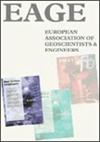Tunnel resistivity deep learning inversion method based on physics-driven and signal interpretability
IF 1.6
4区 地球科学
Q3 GEOCHEMISTRY & GEOPHYSICS
引用次数: 0
Abstract
Data-driven deep learning technology has a strong non-linear mapping ability and has good development potential in geophysical inversion problems. Traditional inversion techniques offer broad generality, but they can remain trapped in local minima, particularly for three-dimensional tunnelling resistivity inversion. In this work, we present an inversion methodology that combines traditional physics-driven and deep learning data-driven inversion approaches. To further support deep neural networks' dependability on unseen data, the interpretability of their working mechanism is explored. We execute migration learning based on small sample data after identifying the critical parameters that restrict the effectiveness of inversion by analysing the feature maps of various model data. We demonstrate, using both synthetic examples and field data, that the proposed method can improve the accuracy in detecting water-bearing anomalies (caves and faults), which are typically encountered during tunnel excavation.基于物理驱动和信号可解释性的隧道电阻率深度学习反演方法
数据驱动的深度学习技术具有很强的非线性绘图能力,在地球物理反演问题上具有很好的发展潜力。传统反演技术具有广泛的通用性,但可能会陷入局部最小值的困境,尤其是在三维隧道电阻率反演方面。在这项工作中,我们提出了一种结合传统物理驱动和深度学习数据驱动的反演方法。为了进一步支持深度神经网络对未知数据的依赖性,我们探索了其工作机制的可解释性。我们通过分析各种模型数据的特征图,确定了限制反演有效性的关键参数,然后基于小样本数据执行迁移学习。我们利用合成示例和实地数据证明,所提出的方法可以提高探测含水异常(洞穴和断层)的准确性,而这些异常通常是在隧道挖掘过程中遇到的。
本文章由计算机程序翻译,如有差异,请以英文原文为准。
求助全文
约1分钟内获得全文
求助全文
来源期刊

Near Surface Geophysics
地学-地球化学与地球物理
CiteScore
3.60
自引率
12.50%
发文量
42
审稿时长
6-12 weeks
期刊介绍:
Near Surface Geophysics is an international journal for the publication of research and development in geophysics applied to near surface. It places emphasis on geological, hydrogeological, geotechnical, environmental, engineering, mining, archaeological, agricultural and other applications of geophysics as well as physical soil and rock properties. Geophysical and geoscientific case histories with innovative use of geophysical techniques are welcome, which may include improvements on instrumentation, measurements, data acquisition and processing, modelling, inversion, interpretation, project management and multidisciplinary use. The papers should also be understandable to those who use geophysical data but are not necessarily geophysicists.
 求助内容:
求助内容: 应助结果提醒方式:
应助结果提醒方式:


